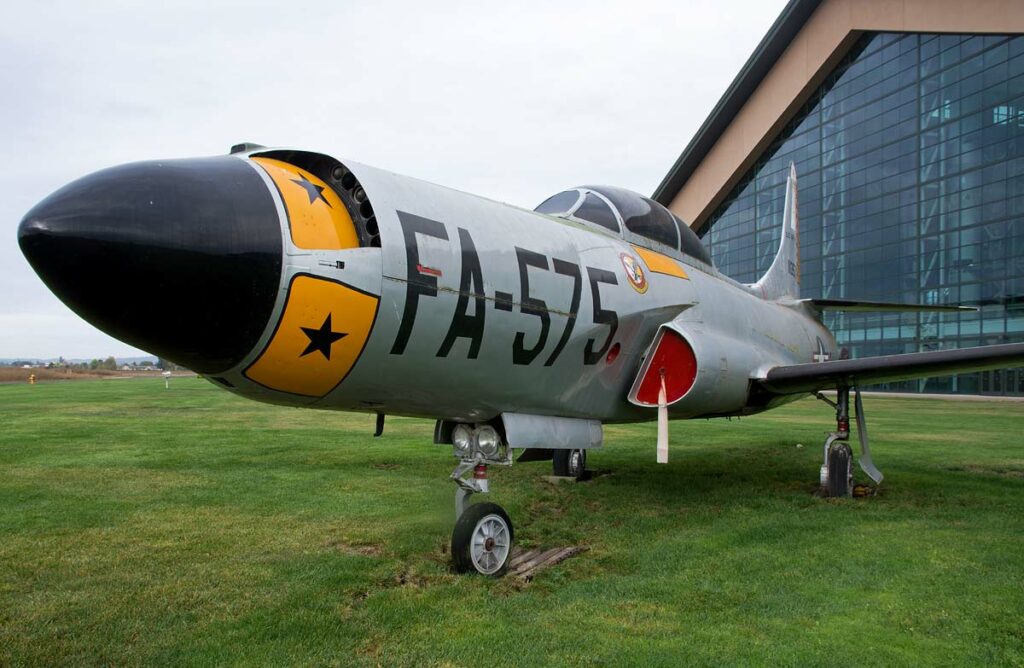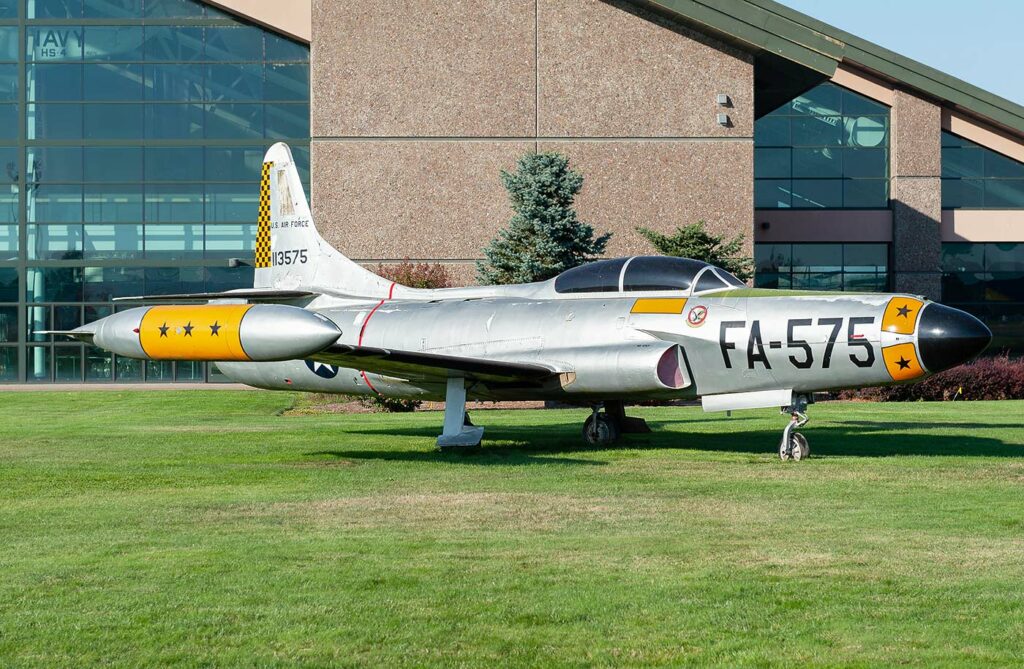The F-94 Starfire, an early American all-weather, jet-powered interceptor, was notable for its radar-guided air defense capabilities.
In brief
The Lockheed F-94 Starfire was a key player in the United States Air Force’s (USAF) transition into the jet age during the early 1950s. Developed from the T-33 Shooting Star trainer, the F-94 was the USAF’s first operational jet-powered all-weather interceptor. Equipped with radar and armed with air-to-air rockets, it was designed to defend against enemy bomber threats during the Cold War. Its service was relatively short-lived due to rapid technological advancements, but the Starfire was instrumental in developing night-fighting and radar interception techniques. The F-94 showcased the growing importance of electronic warfare and served as a stepping stone to more advanced interceptors in the USAF’s arsenal.
The Lockheed F-94 Starfire marked a significant era in military aviation, bridging the gap between propeller-driven interceptors and modern jet fighters.

History of the Development of the Lockheed F-94 Starfire
Post World War II, the onset of the Cold War necessitated a quick response to the potential threat of Soviet bombers. The USAF needed an effective all-weather interceptor capable of operating at night and in adverse weather conditions. Lockheed, leveraging its experience with the T-33, initiated the F-94 program to meet this requirement.
The development of the F-94 was a direct response to the USAF’s need for a radar-equipped interceptor to counter the Soviet bomber threat. The first F-94 made its initial flight on April 16, 1950. The aircraft did not receive a specific NATO nickname but was widely known as the Starfire.
Design of the Lockheed F-94 Starfire
The F-94 featured a straight-wing design, typical of early jet fighters, with modifications from the T-33 to accommodate radar equipment and weapons. It was powered by an Allison J33 turbojet engine, later models were equipped with afterburners, providing enhanced speed.
The F-94’s design included radar equipment in the nose and an air-to-air rocket armament. The aircraft measured approximately 11.3 meters (37 feet) in length with a wingspan of 11.8 meters (38.7 feet).
The main advantages of the F-94 included its all-weather capability and radar-guided interception. However, its straight-wing design limited its top speed and maneuverability compared to later swept-wing designs.
Performance of the Lockheed F-94 Starfire
The F-94’s performance was adequate for its role as an interceptor during its service period. The initial versions could reach speeds of around 960 km/h (597 mph), while later models with afterburners could exceed 1,000 km/h (621 mph). The service ceiling was about 15,240 meters (50,000 feet), and the range was limited, necessitating careful mission planning.
When compared to contemporaries like the North American F-86 Sabre, the F-94 was less agile but offered unique capabilities in night and all-weather interception.
Variants of the Lockheed F-94 Starfire
The F-94 had several key variants:
- F-94A: The initial production model with basic radar and rocket armament.
- F-94B: An improved version with enhanced avionics and flight characteristics.
- F-94C (Starfire): A significant redesign with afterburners, new wing design, and advanced fire-control systems.
Each variant represented an evolution in terms of capability and performance, adapting to the evolving needs of the USAF.

Military Use and Combat of the Lockheed F-94 Starfire
The F-94’s armament primarily consisted of air-to-air rockets, making it suitable for interception missions. It played a significant role in USAF air defense during the 1950s, particularly in intercepting potential Soviet bomber incursions.
The F-94 did not see significant combat use but was instrumental in the Korean War for air defense missions. It competed with Soviet fighter designs like the MiG-15 in terms of role, albeit not directly in combat.
The Starfire was exported to a limited number of countries and was eventually replaced by more advanced interceptors like the F-102 Delta Dagger and F-106 Delta Dart.
The Lockheed F-94 Starfire was a critical component in the USAF’s transition to jet-powered, radar-equipped air defense during the Cold War. While its operational life was relatively short due to rapid advancements in jet technology, the F-94 played a vital role in developing night and all-weather interception tactics. Its legacy lies in its contribution to the evolution of air defense strategies and as a precursor to more advanced jet interceptors.
Back to the Fighter Jet section.